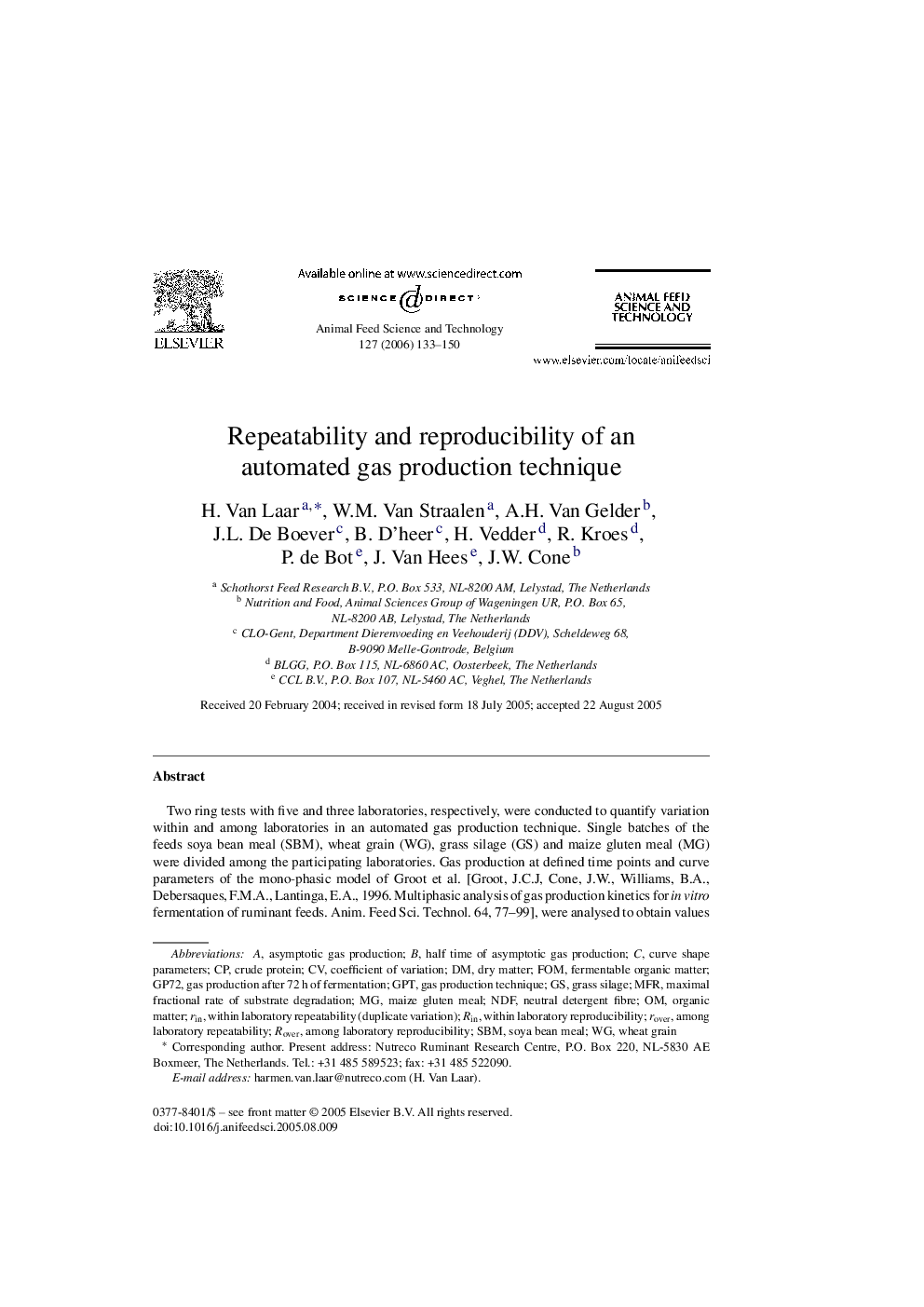| کد مقاله | کد نشریه | سال انتشار | مقاله انگلیسی | نسخه تمام متن |
|---|---|---|---|---|
| 2421216 | 1552501 | 2006 | 18 صفحه PDF | دانلود رایگان |
عنوان انگلیسی مقاله ISI
Repeatability and reproducibility of an automated gas production technique
دانلود مقاله + سفارش ترجمه
دانلود مقاله ISI انگلیسی
رایگان برای ایرانیان
کلمات کلیدی
maize gluten mealwithin laboratory reproducibilitygp72NDFSBMMFRFOMGPTStandardisation - استاندارد سازیFermentation - تخمیر Gas production - تولید گازAsymptotic gas production - تولید گاز وابستهRepeatability - تکرارپذیریReproducibility - تکرارپذیریGas production technique - تکنیک تولید گازWheat grain - دانه گندمRover - روورRIN - رینGrass silage - سیلاکس چمنCoefficient of Variation - ضریب تغییرSoya bean meal - عصاره سویاneutral detergent fibre - فیبر مواد شوینده خنثیorganic matter - ماده آلیdry matter - ماده خشکcrude protein - پروتئین خام
موضوعات مرتبط
علوم زیستی و بیوفناوری
علوم کشاورزی و بیولوژیک
علوم دامی و جانورشناسی
پیش نمایش صفحه اول مقاله

چکیده انگلیسی
Two ring tests with five and three laboratories, respectively, were conducted to quantify variation within and among laboratories in an automated gas production technique. Single batches of the feeds soya bean meal (SBM), wheat grain (WG), grass silage (GS) and maize gluten meal (MG) were divided among the participating laboratories. Gas production at defined time points and curve parameters of the mono-phasic model of Groot et al. [Groot, J.C.J, Cone, J.W., Williams, B.A., Debersaques, F.M.A., Lantinga, E.A., 1996. Multiphasic analysis of gas production kinetics for in vitro fermentation of ruminant feeds. Anim. Feed Sci. Technol. 64, 77-99], were analysed to obtain values for within laboratory repeatability (rin: duplicate measurements) and reproducibility (Rin: among series measurements), and for among laboratory repeatability (rover: among series) and reproducibility (Rover: among laboratories) expressed as coefficient of variation (CV). For specific feeds and gas production parameters, differences in rin and Rin among laboratories occurred, showing that within laboratory repeatability and reproducibility was not the same for all laboratories. Repeatability (rover) and reproducibility (Rover) were best for fermentable organic matter (FOM), ranging from 0.4 to 2.3% and from 0.9 to 4.9%, respectively, for ring test 1. This, although not statistically testable, was better than rover and Rover for total gas production (GP72) that ranged from 2.7 to 3.9% and from 8.2 to 9.4%, respectively. Introduction of some new incubation procedures in ring test 2 reduced duplicate variation (rin) in GP72 from the range of 1.4-10.3 to 0.2-3.1%. This range of variation in GP72 was still numerically higher than variation in FOM, from 0.2 to 1.1%, indicating that calibration of the equipment is a source of variation. Alterations in the technique were ineffective in improving Rin, or overall repeatability and reproducibility (rover and Rover). Use of a standard feed sample to correct for between run variation within laboratory numerically decreased variation (Rin) in gas production up to 10Â h (from 5 to 20% to 3 to 12.5%) and after 40Â h (from 1 to 5% to 0.8 to 3%) of fermentation, but not between 10 and 40Â h. Within laboratories, a level of rin for GP72 of 1-2%, and for Rin a level of 2-3.5% should be achievable. Use of a standard feed sample to correct for between run variation reduced Rin for GP72 to below 2%.
ناشر
Database: Elsevier - ScienceDirect (ساینس دایرکت)
Journal: Animal Feed Science and Technology - Volume 127, Issues 1â2, 30 March 2006, Pages 133-150
Journal: Animal Feed Science and Technology - Volume 127, Issues 1â2, 30 March 2006, Pages 133-150
نویسندگان
H. Van Laar, W.M. Van Straalen, A.H. Van Gelder, J.L. De Boever, B. D'heer, H. Vedder, R. Kroes, P. de Bot, J. Van Hees, J.W. Cone,